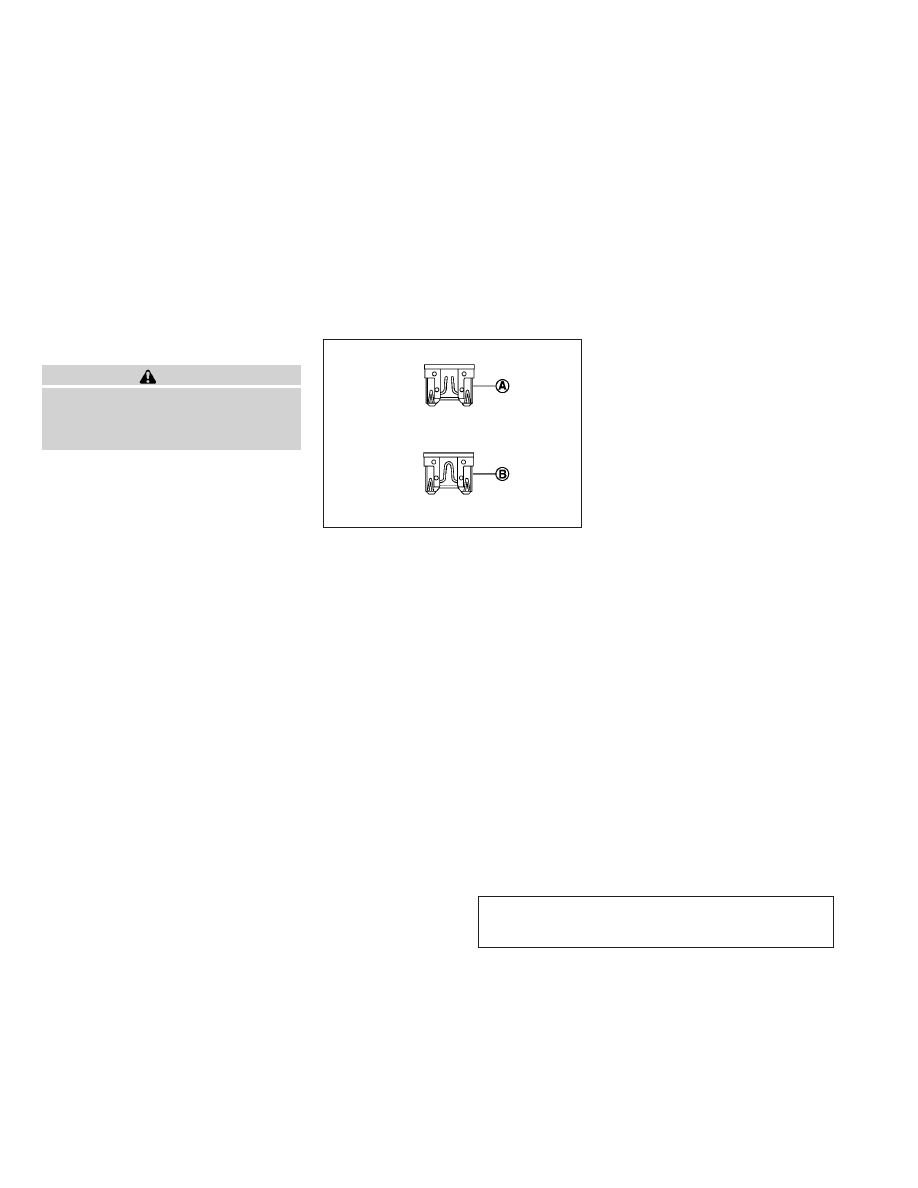Infiniti M37 (2011 year). Manual - part 28

ENGINE COMPARTMENT
CAUTION
Never use a fuse of a higher or lower amperage
rating than that specified on the fuse box cover.
This could damage the electrical system or
cause a fire.
If any electrical equipment does not operate,
check for an open fuse.
1. Be sure the ignition switch is pushed to
the OFF or LOCK position and the head-
light switch is turned to OFF.
2. Open the engine hood and remove the
cover on the battery and the fuse/fusible
link holder.
3. Remove
the
fuse/fusible
link
holder
cover.
4. Remove the fuse with the fuse puller.
5. If the fuse is open
䊊
A
, replace it with a
new fuse
䊊
B
. Spare fuses are stored in the
passenger compartment fuse box.
6. If a new fuse also opens, have the elec-
trical system checked and repaired by an
INFINITI retailer.
The holder
䊊
1
also contains the fuses. For
checking and/or replacing, see an INFINITI re-
tailer.
Fusible links
If any electrical equipment does not operate
and fuses are in good condition, check the
fusible links. If any of these fusible links are
melted, replace only with genuine INFINITI
parts.
SDI1754
Maintenance and do-it-yourself
8-23
췽
—
—
01/13/10—tbrooks
墍